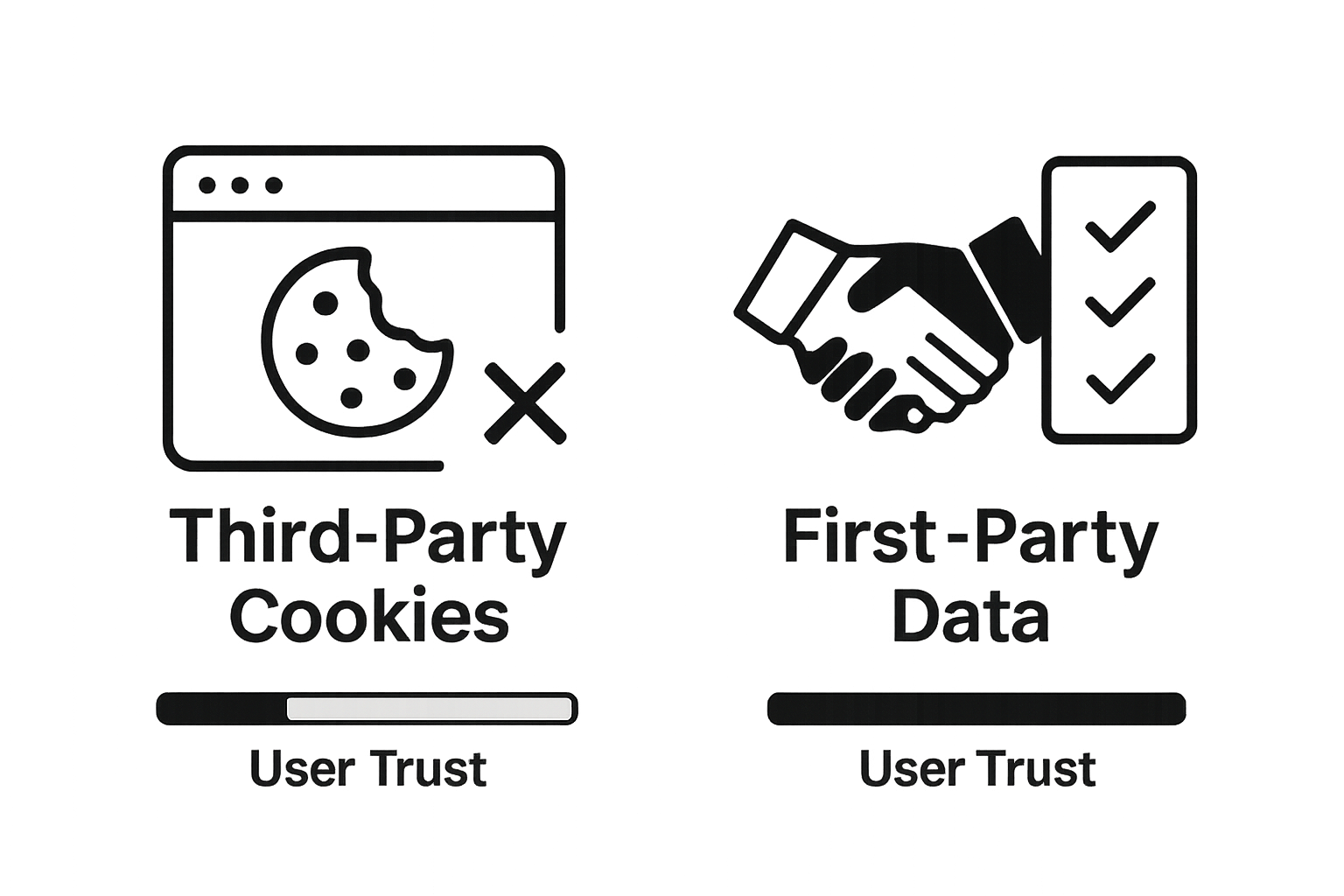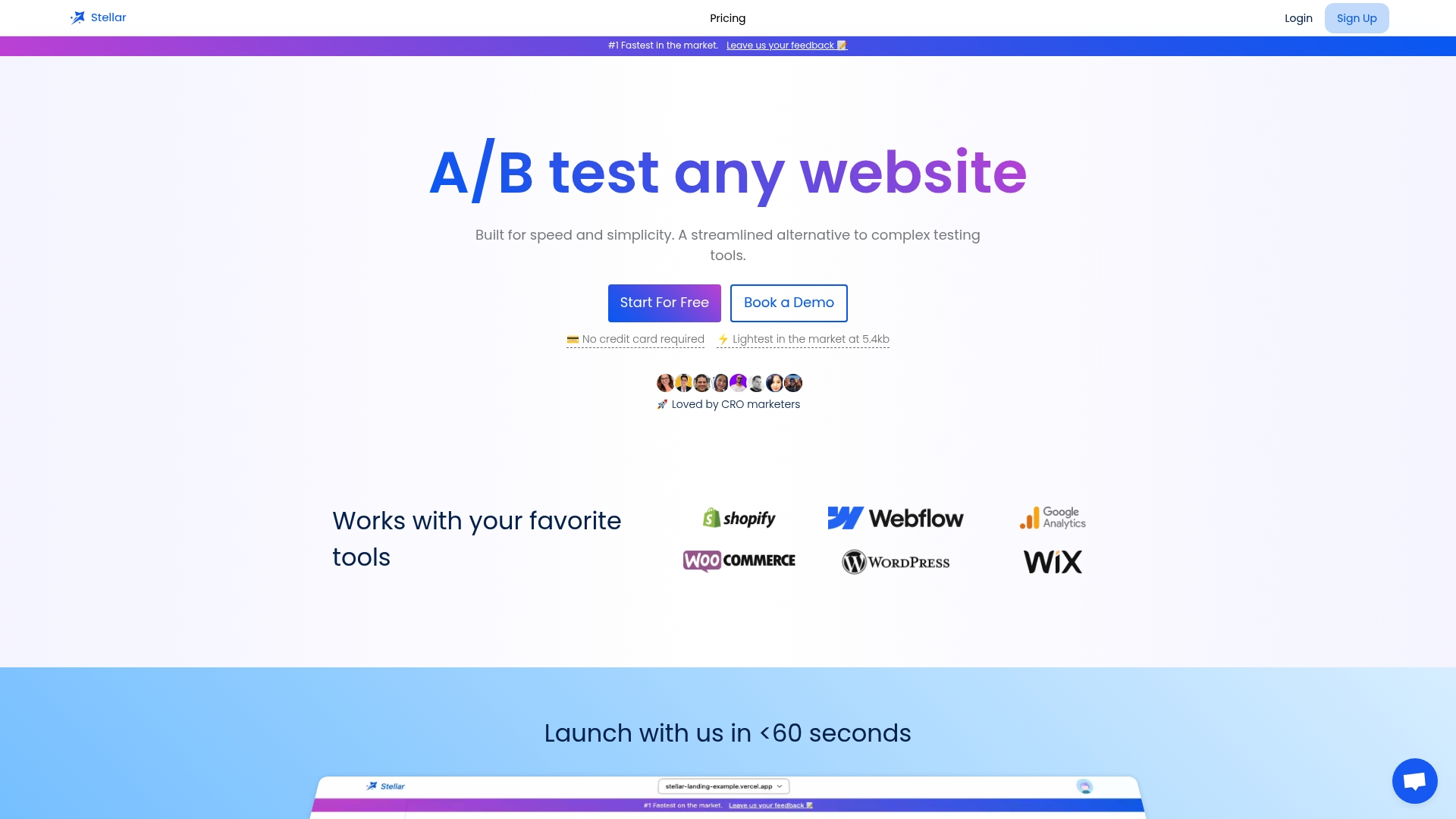
Understanding Personalization without Cookies

Personalization without cookies used to sound impossible. Marketers relied on cookies for years to understand what users want. Yet, by 2023, 75 percent of the world’s population had privacy regulations protecting their personal data. Most people think this would put an end to personalized experiences online. The surprise is that new techniques actually let companies create highly relevant experiences without tracking users across the web. And some brands are making even more revenue than before.
Table of Contents
- What Is Personalization Without Cookies?
- How Personalization Without Cookies Works
- Key Concepts In Personalization Without Cookies
Quick Summary
| Takeaway | Explanation |
|---|---|
| Prioritize first-party data | Use first-party data gathered from user interactions for more accurate personalization efforts. |
| Emphasize privacy and consent | Implement strategies that respect user privacy, focusing on consent-driven data collection. |
| Utilize contextual targeting | Engage users based on content relevance rather than tracking historical behavior. |
| Adopt advanced algorithms | Use machine learning to create personalized experiences while safeguarding user information. |
| Stay compliant with regulations | Adapt personalization strategies to comply with emerging global privacy laws and standards. |
What is Personalization without Cookies?
Personalization without cookies represents an innovative approach to delivering tailored digital experiences while respecting user privacy and adapting to the evolving digital landscape. As traditional third-party cookie tracking becomes increasingly restricted, marketers and digital professionals are exploring alternative methods to understand and engage their audiences.
The Core Concept of Cookieless Personalization
At its essence, personalization without cookies involves creating customized user experiences using alternative data collection and analysis techniques that do not rely on traditional browser-based tracking. Unlike conventional methods that depend on third-party cookies to track user behavior across websites, this approach leverages more privacy-friendly and consent-driven strategies.
Key techniques in this domain include:
- First-party data collection directly from user interactions
- Contextual targeting based on content relevance
- Machine learning algorithms that predict user preferences
- Anonymous user segmentation
Why Personalization without Cookies Matters
The shift toward cookieless personalization is driven by critical changes in digital privacy regulations and user expectations. Research from Gartner suggests that by 2023, 75% of the world's population will have modern privacy regulations covering personal data consumption. This means businesses must adapt their personalization strategies to remain compliant and effective.
Moreover, users are increasingly concerned about their online privacy. They want personalized experiences but not at the cost of feeling constantly monitored. Check out our guide on landing page personalization techniques that balance user experience with privacy considerations.
Personalization without cookies isn't just a trend—it's becoming a necessary evolution in digital marketing and user experience design. By embracing these new approaches, businesses can create meaningful, relevant interactions while maintaining user trust and adhering to emerging privacy standards.
Why Personalization without Cookies Matters
The landscape of digital marketing is undergoing a profound transformation, with personalization without cookies emerging as a critical strategy for businesses seeking to maintain meaningful customer relationships while respecting privacy standards. This approach is not merely a technological adaptation but a fundamental shift in how organizations connect with their audiences.
Below is a comparison table outlining the main differences between first-party data and third-party cookie data based on their characteristics discussed in the article.
| Data Type | How It Is Collected | Reliability & Accuracy | User Consent & Transparency | User Privacy Risk |
|---|---|---|---|---|
| First-party Data | Direct user interactions with a specific website/app | High | High | Low |
| Third-party Cookies | Tracking users across multiple external websites/apps | Moderate to Low | Low | High |
Privacy and Consumer Trust
Modern consumers have become increasingly sophisticated about data privacy. Research from Pew Research Center reveals that 79% of adults are concerned about how companies use their personal data. Personalization without cookies directly addresses these concerns by prioritizing user consent and transparency.
This table summarizes privacy and consumer trust considerations that brands need to address as described in the article.
| Privacy Consideration | Description |
|---|---|
| Minimizing invasive tracking | Avoid persistent and cross-site tracking mechanisms |
| Providing clear data usage explanations | Ensure users understand how their data will be used |
| Offering user control | Allow users to manage their data preferences |
| Robust data protection protocols | Implement security measures to safeguard personal information |
Key privacy considerations include:
- Minimizing invasive tracking mechanisms
- Providing clear data usage explanations
- Offering user control over personal information
- Implementing robust data protection protocols
Economic and Regulatory Implications
The shift away from third-party cookies is not optional but increasingly mandated by global privacy regulations. Companies implementing cookieless personalization strategies can proactively navigate complex legal landscapes, avoiding potential penalties and maintaining competitive advantage.
Future of Customer Experience
Personalization without cookies represents a more intelligent, nuanced approach to understanding customer preferences. By leveraging first-party data, contextual targeting, and advanced machine learning algorithms, businesses can create highly relevant experiences without compromising individual privacy. This strategy transforms data collection from a potentially invasive process into a collaborative, consent-driven interaction that respects user autonomy while delivering personalized value.
How Personalization without Cookies Works
Personalization without cookies leverages sophisticated techniques that enable businesses to deliver targeted experiences while maintaining user privacy. By moving beyond traditional tracking methods, these approaches create intelligent, adaptive digital interactions that respect individual data boundaries.
Data Collection and Analysis Strategies
The core of cookieless personalization revolves around innovative data collection methods that prioritize user consent and minimal intrusion.
The table below highlights the main approaches for cookieless personalization, as outlined in the strategies discussed in the article.
| Approach | How It Works | Key Benefit |
|---|---|---|
| Contextual Targeting | Uses page content and real-time context for targeting | Relevant, privacy-friendly experience |
| First-party Data Utilization | Collects data from user actions on the site | Accurate, consent-driven insights |
| Anonymous User Segmentation | Groups users by behavior, not identity | Maintains anonymity and privacy |
| Machine Learning Predictive Modeling | Predicts user preferences using behavior data | Adaptive personalization without tracking |
| Research from McKinsey indicates that companies using advanced personalization techniques can generate 40% more revenue compared to average performers. |
Key data collection approaches include:
- Contextual targeting based on content relevance
- First-party data gathered through direct user interactions
- Anonymous user behavior analysis
- Machine learning predictive modeling
Technical Mechanisms of Personalization
Modern personalization techniques employ advanced algorithms and machine learning to understand user preferences without relying on invasive tracking. These systems analyze user interactions, content engagement, and explicit preferences to create dynamic, adaptive experiences. Explore our guide on content personalization techniques to understand how these strategies can be implemented effectively.
Privacy-Preserving Personalization Techniques
Advanced personalization technologies now integrate privacy-by-design principles, ensuring that user data remains protected throughout the experience customization process. By anonymizing data, using aggregated insights, and providing clear opt-out mechanisms, these approaches balance personalized experiences with robust privacy protections. The result is a more transparent, user-centric approach to digital engagement that builds trust while delivering relevant, tailored content.

Key Concepts in Personalization without Cookies
Personalization without cookies represents a sophisticated approach to digital experiences that prioritizes user privacy while maintaining intelligent, adaptive interactions. Understanding the foundational concepts behind this strategy is crucial for marketers and digital professionals seeking to navigate the evolving digital landscape.
First-Party Data Utilization
First-party data emerges as the cornerstone of cookieless personalization. Unlike third-party cookies that track users across multiple websites, first-party data is collected directly through user interactions with a specific platform. Research from Harvard Business Review suggests that companies effectively leveraging first-party data can increase marketing efficiency by up to 30%.
Key characteristics of first-party data include:

- Direct collection from user interactions
- Higher accuracy and reliability
- Greater user consent and transparency
- More comprehensive user intent signals
Contextual and Predictive Personalization
Contextual personalization moves beyond individual user tracking to focus on content relevance and user environment. This approach analyzes the specific context of user interactions, delivering experiences based on real-time content engagement rather than historical browsing patterns. Learn more about our content personalization strategies to understand how these techniques can be implemented.
Privacy-Preserving Personalization Technologies
Advanced technologies like differential privacy have revolutionized personalization strategies. According to research from the National Institutes of Health, differential privacy introduces statistical 'noise' into data collection processes, ensuring individual user anonymity while still enabling meaningful personalized experiences. This technique represents a critical innovation in maintaining user privacy without sacrificing the benefits of tailored digital interactions.
Ready to Personalize Without Compromising Privacy?
If you have been struggling with the complex challenge of delivering tailored user experiences while respecting privacy rules, you are not alone. The move away from traditional third-party cookies has left many businesses searching for dependable, privacy-first options. Imagine providing the kind of personalization your users want—using first-party data, contextual analysis, and advanced machine learning—without missing a beat on speed or compliance. Discover why marketers switching to cookieless personalization report greater trust and engagement among their audiences. Find out how Stellar helps create relevant, privacy-respecting digital experiences, and explore how our solutions will streamline your marketing efforts.

Start making every interaction count today. Experience how quick and easy it is to build high-performing campaigns with Stellar's A/B testing and personalization tools. See our landing page personalization techniques or jump straight into the platform at gostellar.app to claim your free plan and future-proof your marketing strategy.
Frequently Asked Questions
What is personalization without cookies?
Personalization without cookies refers to delivering tailored user experiences without relying on traditional third-party cookie tracking. Instead, it utilizes methods like first-party data, contextual targeting, and machine learning algorithms to engage users while respecting their privacy.
Why is personalization without cookies important?
This approach is essential due to increasing privacy regulations and user concerns about data monitoring. By adopting cookieless personalization strategies, businesses can maintain effective engagement with their audience while building trust and adhering to privacy standards.
How do businesses implement personalization without cookies?
Businesses implement this strategy by utilizing first-party data collected directly from user interactions, employing contextual targeting based on content relevance, and adopting machine learning techniques to predict user preferences without invasive tracking.
What are the key benefits of using first-party data?
First-party data is crucial because it is collected from direct user interactions, ensuring higher accuracy and reliability. It also supports greater user consent and transparency, providing more comprehensive signals of user intent compared to third-party tracking methods.
Recommended
- Personalization in Digital Marketing: Strategies for 2025
- Content Personalization Ideas for CRO Marketers in 2025
- Landing Page Personalization Techniques That Don't Hurt Speed
- Content Personalization Without the Performance Penalty
- What is Personalized Travel? Understanding Unique Experiences - Yopki
- Understanding Personalization in Ecommerce: A Complete Guide
Published: 9/29/2025